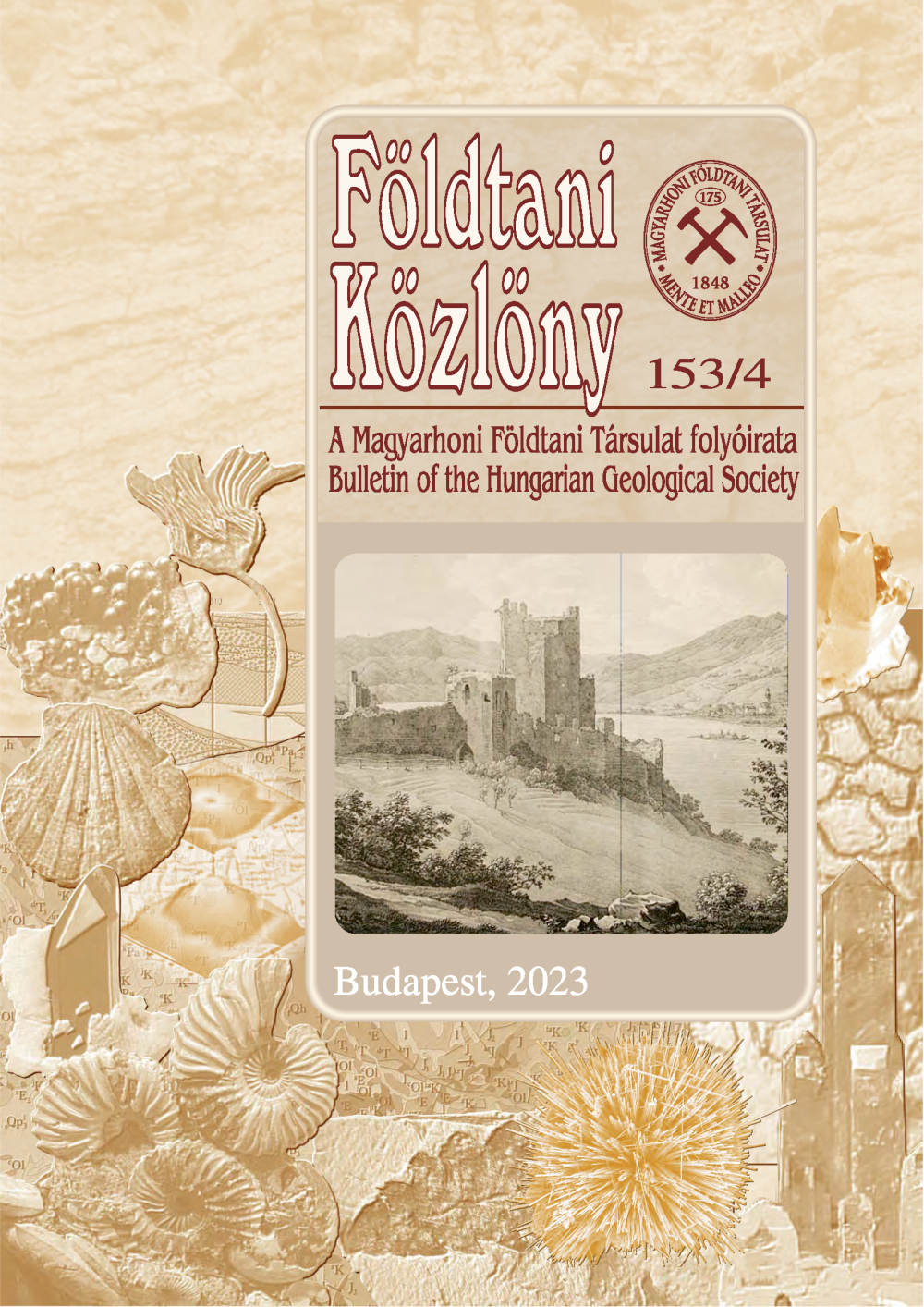A Dunántúli-középhegység felső-triász képződményeinek rétegtani- és fácieskérdései
Régi problémák újragondolása újabb ismeretek alapján
Abstract
International developments in stratigraphy and the results of stratigraphic researches and facies studies performed in the Transdanubian Range during recent decades make a critical review of the stratigraphic subdivision of the Upper
Triassic of this region relevant and timely. It also justifies the presentation of proposals for the modification of earlier suppositions. Such a review on the stratigraphic system and facies relationships could also reinforce the conclusion that in the evaluation of the north-eastern part of the Transdanubian Range a significant displacement of the facies zones along the Vértessomló-line should not be neglected. On the basis of the arguments presented in this paper, the assignment of dolomites formed in the internal part of a Carnian isolated platform to the Gémhegy Dolomite Formation is proposed.
Progradation wedges of remarkable thickness, which formed on the basin-ward foreslope of the platform, can be evaluated as members - that is, the Kádárta Dolomite, Sédvölgy Dolomite and Henye Dolomite Members. Limestones deposited on an isolated platform and their dolomitised variants (which are known in the Keszthely Mts. and in the western part of the Bakony Mts.) can be assigned to the Ederics Formation. This study suggest that Carnian basin facies of the Vértes Hills, typified by carbonate rocks, cannot be classified as belonging to the predominantly argillaceous Veszprém Marl Formation; instead, they should be defined as an individual lithostratigraphic unit. It is the Lower Carnian Hajdúvágás Member which should be considered as the marginal facies of the basinal Füred Limestone Formation. It is overlain by the platform carbonates of the Gémhegy Formation that is followed by the basinal succession of the Csákberény Formation. North of the Vértesomló-line, in the south-eastern foreground of the Gerecse Mts. and in the Pilis area, the Carnian basin facies show closer lithological affinity with the development of the Vértes than is the case with the Buda Hills; accordingly it can be assigned to the Csákberény Formation. The cyclic peritidal-lagoon facies of the Fődolomite (Hauptdolomite) and the Dachstein Limestone is characteristic in the Bakony Mts., in the Vértes Hills in the southern belt, and in the Gerecse Mts. and Pilis Hills in the northern belt of the Transdanubian Range. External platform facies of the two formations represent the eastern parts of both belts: that is, the Vadaskert Member of the Fődolomite Formation and the oncoidal development of the Dachstein Limestone Formation (for which the name Remetehegy Member is proposed in the present paper).











